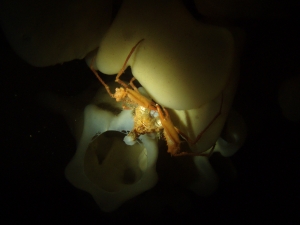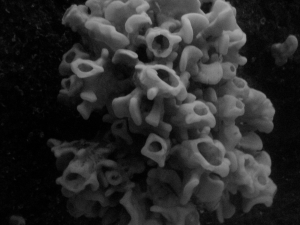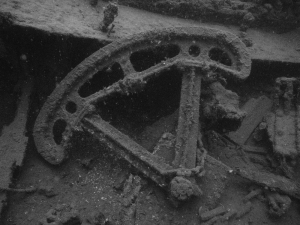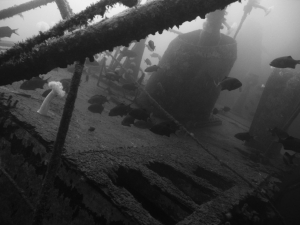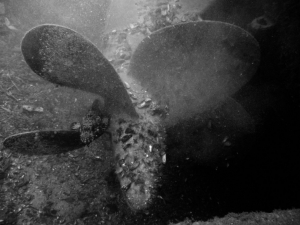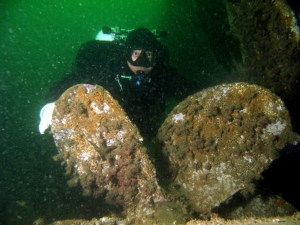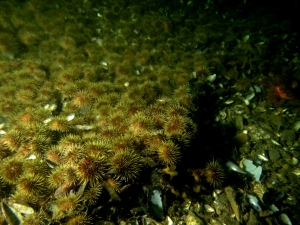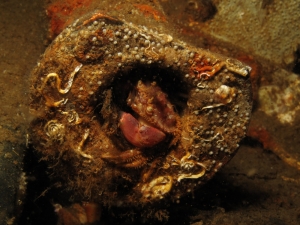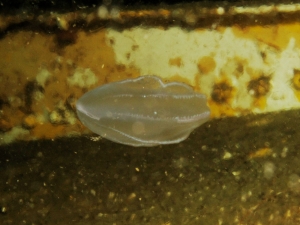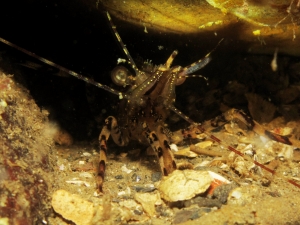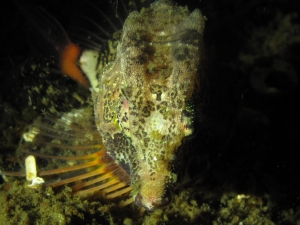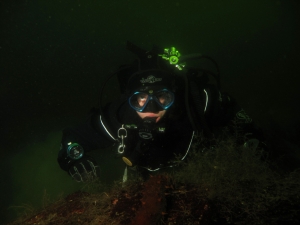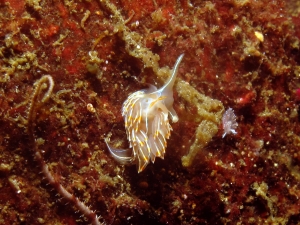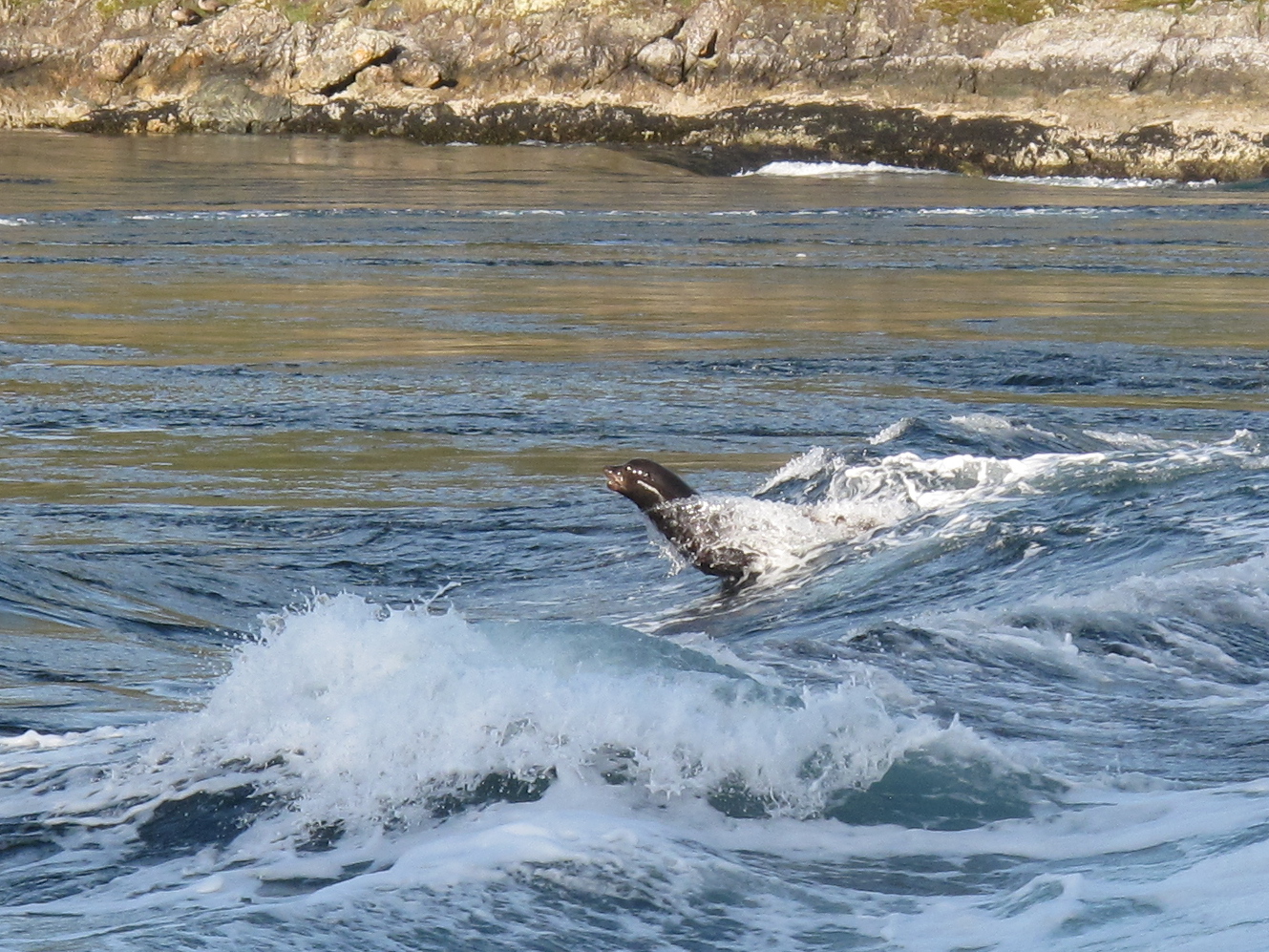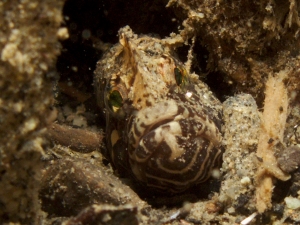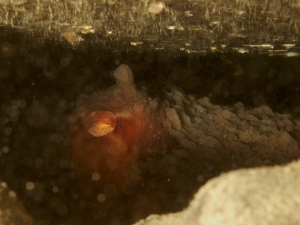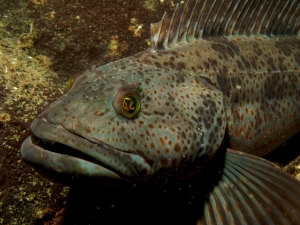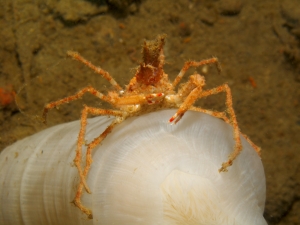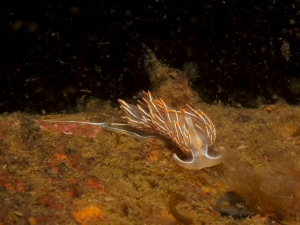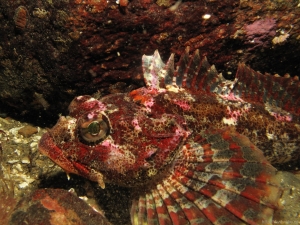Another dive site I’ve somehow neglected since moving out here has been “The Cut” at Whytecliff. So, in good measure Josh and I decided to go dive it. The Cut itself is a fun dive site, with an interesting descent that ultimately leads incredibly deep. We stopped at 30 meters and went to see the glass sponges that are one of the signatures of the Cut. Unfortunately the fiber optic to sync my stobe was loose and my strobe wouldn’t fire on the first dive. I managed a couple of photos using my can light to illuminate, but nothing special.
The Glass Sponges are really interesting. Very intricately shaped, with lots of good hiding spots for critters. There was one with a false lobster hanging out which would have made a fantastic photo. Definitely a spot worth checking out.
Our second dive we decided to swim from the cut into the bay. A bit of current worked against us so I didn’t take too many photos in the anenome garden. Again, not too many great photos out of this dive, but the dive itself was great, especially exploring the bay which seemed to be full of Frosted Nudibranchs. I even saw a yellow and white-tipped Nudi, but unfortunately the photo didn’t turn out well. The dive was capped off with some drills and a very smooth free-water ascent.
Interestingly, the shallows around the cut seemed to be full of dead, half disintegrated starfish. This was rather unusual. Later in the week after the dive some news articles started popping up about the mysterious die-off: “Massive Starfish Die-Off Baffles Scientists“. I’m curious if this is a natural phenomenon (Population surge, disease, etc.) or something related to humans (pollution, etc). I didn’t get any photos of the dead starfish at the time, because to be honest it wasn’t the most photogenic subject. I’ll try and get some shots to document it next time I’m out. In the meantime, the link I posted above has some shots of the phenomenon. Also some tin-foil-hat worthy comments in the comments section….
Some photos from the dive below the jump..

